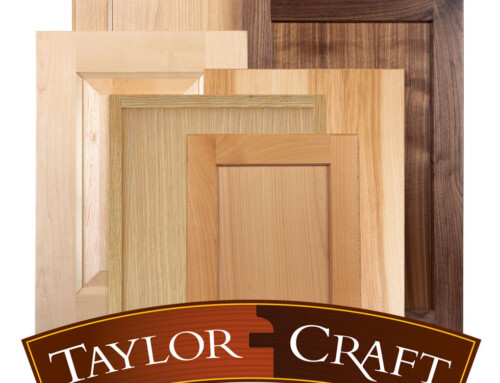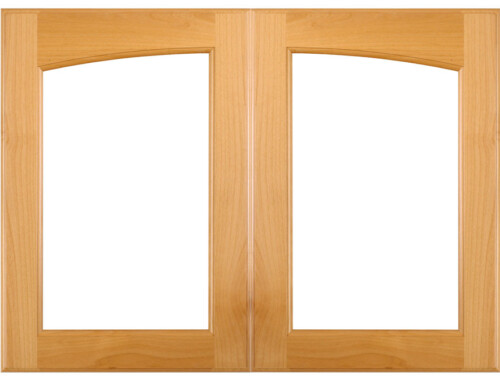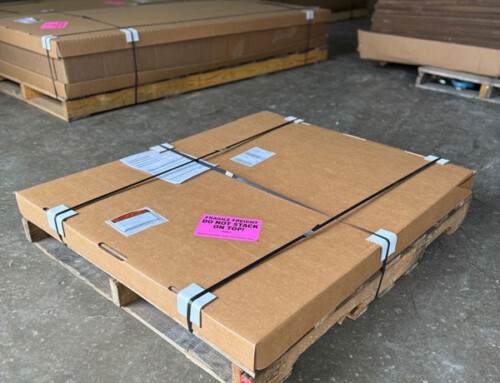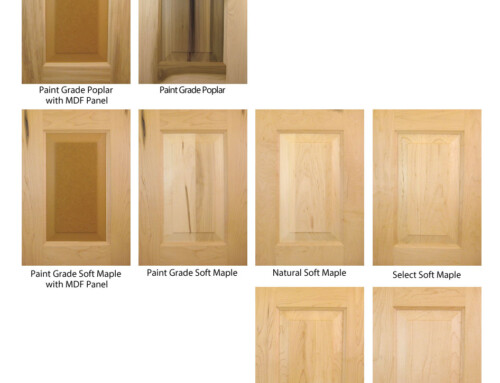We get asked by cabinetmakers and homeowners what the best products are to clean both painted and wood cabinet doors. Because we’ve been at this for a few decades now, we have some tips and tricks we’ve learned along the way that we are happy to pass along on how to clean cabinet doors and what cleaning products we like.
 Cabinet door material determines the cleaning product
Cabinet door material determines the cleaning product
If you have veneer or wood cabinet doors your cleaning agent will be different than if you have painted, laminate, melamine or RTF cabinet doors. This may seem blindingly obvious but we have seen harsh and even abrasive cleaners used on wood that over time, can cause wood finish to break down or look cloudy so it bears mentioning.
While most cabinet finishes are water resistant, over time water can damage many finish types. On sink fronts, tub surrounds and any other area exposed to water, be sure to dry off water drips right away to keep your cabinets looking new. Whitening agents in toothpaste and cleaning solutions, and oils and color from foods and beauty products can stain or discolor cabinet doors if they are allowed to sit for a long period of time. Be sure to clean up any spills before they have a chance to create lasting damage.
How to Clean Wood Cabinet Doors and Veneer
First make sure your cabinet doors are free from any food, oils or other spills by wiping them off with a damp (not dripping) cloth. If the spill doesn’t come off easily with a damp cloth, we recommend warm water, a mild dish soap with degreaser such as Dawn, and a soft toothbrush if you need something with more cleaning power than a cloth. Do not use abrasive scrub brushes, scouring pads, steel wool or anything that could scratch the surface. Test an area on the back of the door to be sure your cleaning products are safe to use without causing damage before moving to visible areas.
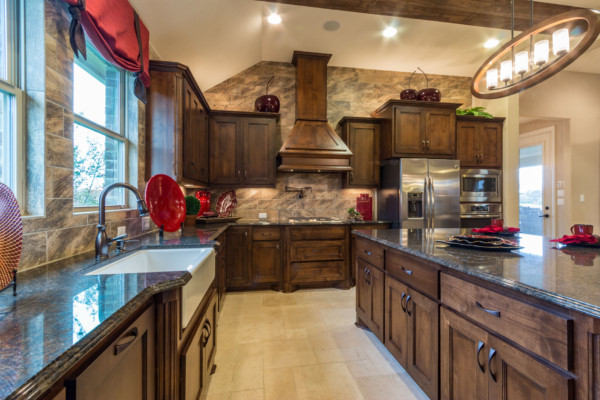 Wood cabinet doors should also be dusted on a regular basis to keep them looking nice and because dust buildup combined with the oils and moisture in the kitchen or bath can make cleaning a bigger chore if it isn’t done regularly. We love microfiber cloths for dusting and cleaning because they don’t tend to snag on any sharp corners and they don’t leave lint behind, but a Swiffer, feather duster or any clean cloth works well too. We sometimes use a toothpick or soft toothbrush to get into the cabinet door corners and fine details like ornate applied molding or hardware crevices.
Wood cabinet doors should also be dusted on a regular basis to keep them looking nice and because dust buildup combined with the oils and moisture in the kitchen or bath can make cleaning a bigger chore if it isn’t done regularly. We love microfiber cloths for dusting and cleaning because they don’t tend to snag on any sharp corners and they don’t leave lint behind, but a Swiffer, feather duster or any clean cloth works well too. We sometimes use a toothpick or soft toothbrush to get into the cabinet door corners and fine details like ornate applied molding or hardware crevices.
Once the dust has been removed, if you want to give your cabinets a little polish and shine, and create a protective barrier to moisture, once or twice a year, use lemon oil or mineral oil designed for fine furniture. Apply a small amount of the oil to a clean cloth and rub it in evenly over the cabinet and door surface, making sure wipe off any excess oil. We recommend spraying oils and cleaners (especially glass cleaners used on glass inserts in cabinet doors) onto the cloth, rather than directly onto the cabinet because overspray from some cleaners can damage nearby appliance, hardware or wood surfaces. For wood cabinet doors with a medium or dark finish, you can purchase furniture oil with a slight tint, such as Old English, that will cover up minor scratches. Always test an inconspicuous area on the back of the door when using a new product and be sure to rub the oil in evenly and completely, not leaving any drips.
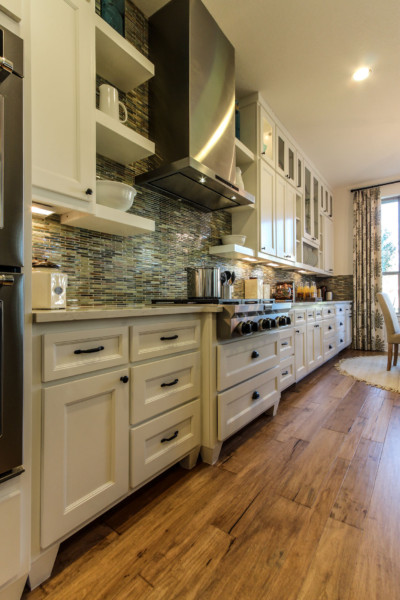 Cleaning Laminate, RTF and Painted Cabinet Doors
Cleaning Laminate, RTF and Painted Cabinet Doors
Painted cabinet doors can also be cleaned with warm, soapy water but unlike wood and veneer, you should not use oils or waxes to “shine-up” your painted cabinet doors. Stains on white or very light cabinet doors can sometimes be removed using a Majic Eraser sponge, lightly in a circular motion over the stained area or a solution of baking soda and water or baking soda and lemon juice rubbed lightly over the stained area. Some stains will not come out of a painted surface and you don’t want to remove the paint, making the problem even worse. Always test your cleaning method in an inconspicuous area before trying it on the face of the cabinet.
Be sure to find out the exact paint color used on your cabinets, from your cabinet manufacturer at the time of purchase so if you have any scratches or dings a few years down the road, you don’t have to become a detective in order to find out what brand and color to use to do the repair. Over time, paint colors can yellow, lighten or even darken due to exposure to light, humidity, oils, etc so even with the exact paint color, be aware that touch ups may be visible.
If you have any additional tips on cleaning cabinets and cabinet doors we would love to hear from you! Just post your reply below.
Heide Osborn
TaylorCraft Cabinet Door Company



